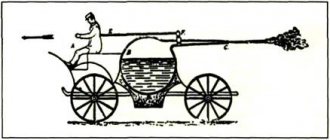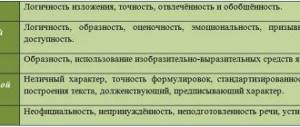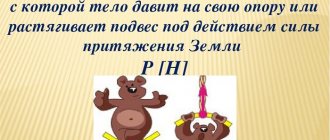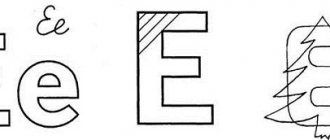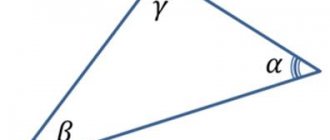Physics lesson notes, grade 10
Lesson 1
Topic: What physics studies. Physical phenomena. Observations and experience.
Lesson objectives: ∙ repetition, deepening and systematization of information available to students about scientific methods for studying physical phenomena;
∙ formation of students’ scientific worldview, focusing on the limits of applicability of Newton’s laws of classical mechanics based on the existence of the movement of microparticles;
∙ cultivate a conscious attitude to learning and interest in studying physics.
Equipment: Ruler, pencil, groove, tripod, ball, clock with second hand, weight on string
During the classes:
1. Organizational moment.
Message to students of the 10th grade physics curriculum on a 2-hour schedule.
2. Studying new material.
Repetition:
∙ Science for everyone – knowledge of the surrounding world – the foundations of modern science – machines and mechanisms.
∙ Simple truths – a stone falling down, a person’s body being burned by fire, a bruise on hard bodies.
∙ Transformation of the world – nature – physics – technology.
∙ Physics and other sciences - the study by physics of the simplest and most general properties of matter.
∙ Scientific method – experience – laws – practice.
∙ Physical quantities and their measurement.
∙ Connections between physical quantities – changing conditions.
∙ Theory – explanation of particular patterns from a general point of view.
Main material:
∙ Changing body position (examples).
∙ Mechanical movement (definition).
∙ The meaning of phrases in the definition of mechanical movement:
a) space and time are the most general concepts and the least clear concepts of physics;
b) relative to other bodies - the most important thing in the definition.
∙ Laws of nature and legal laws.
Demos:
∙ Rolling the ball along the chute.
∙ Oscillation of the pendulum.
∙ Measuring space (with a ruler) and time (with a clock with a second hand or an electronic clock.)
3. Fixing the material.
Analysis of questions:
∙ Why does a person need to know the laws of nature? (To understand how the machines and mechanisms created by scientists work. To do this, you need to learn the basics of modern science.)
∙ Why do people need to understand the world around them? (To use his laws to make work easier and improve people's lives.)
∙ Give examples that prove that physics is the foundation of the most important areas of technology. (Examples of emerging technical sciences based on physics.)
∙ Why do the concepts of physics and its laws form the basis of any branch of natural science? (Physics studies the simplest and most general properties of the material world.)
∙ In what ways is scientific truth obtained? (Physical research method.)
∙ What is a physical quantity? (Measurable property of bodies or phenomena.)
∙ How are connections between physical quantities established? (Studying the dependence of a given quantity on the nature of changes in other quantities separately.)
∙ What is mechanical movement? (Change in the position of a body in space relative to other bodies over time.)
∙ Are Newton's laws of classical mechanics always valid? (No, if motion at speeds close to the speed of light is considered.)
4. Summing up the lesson.
Homework: Introduction, § 1, 2.
Physics lesson notes. 10kl
Elastic force
, where
k is the spring stiffness.
The average value of the modulus of elastic force is calculated by the formula
Work of elastic force and change in spring potential energy
A=- ( )
Physics 10th GRADE DATE: 12/18/2019
Topic: Work of gravity. Work of elastic force. Study of friction forces
The purpose of the lesson:
Reinforce the concept of mechanical work; work done by gravity when moving a body thrown vertically up, vertically down; when moving along a curved path; when moving along a closed trajectory; find out how to correctly calculate the amount of work when a body moves on a spring along a horizontal path; conduct a mini study of friction forces in a popularization form.
continue to develop the skills to observe and explain physical phenomena, generalize and compare experimental results.
Developmental goal:
Development of different types of thinking and the ability to highlight the main thing in the theoretical foundations of knowledge.
Educational goal:
- education of a harmoniously developed personality;
- formation of positive self-esteem of the individual through motivation to the subject.
-involving each student in learning activities through “knowledge in action.”
Equipment:
Demonstration:
weights, trolley, dynamometer, spring, ruler, set of weights, .
Lesson type: Combined
Method. Verbal
Literature / main /
Lesson plan.
- Organizational moment (2 minutes)
- Updating knowledge (15 minutes)
- Introduction of new material (12 minutes)
Mini study of friction forces (12 minutes, each performs no more than 4 minutes)
- Reinforcement of learned material (3 minutes)
- Homework
During the classes
Organizing time.
Checking attendance, class readiness for the lesson, recording the topic and homework on the board.
Updating knowledge.
In the last lesson we looked at the topic “The work of gravity.” Our task today is to consolidate this knowledge. You need to briefly describe in summary form how you learned this question.
- work done by gravity when moving a body thrown vertically upward; Listen to the student's answer.
Teacher:
All our daily actions come down to the fact that with the help of muscles we either set the surrounding bodies in motion and maintain this movement, or stop the moving body. These bodies are tools of labor, in games - balls, pucks. In production and agriculture, people also set tools in motion.
What do you understand by the word “Work”?
Teacher:
When a person (or any engine) acts with a certain force on a moving body, then we say that he does work. This idea of work formed the basis for the formation of the concept of work of force.
Students:
Usually, by the word “Work” we mean any useful work of a worker or student.
- vertically down;
Listen to the student's answer.
Demonstration of experiments
Experience 1.
A cart loaded with a weight is moved a certain distance. The force acting on the cart is measured with a dynamometer (Fig. 1)
Experience 2.
The weight is raised to a certain height. The force acting on the weight is measured with a dynamometer (Fig. 2).
Teacher:
What conclusion did we draw?
Experience 3.
insufficient
to cause the cart to move is applied to
Experience 4.
A weight suspended from a spring is acted upon by the elastic force of the spring. But the weight does not move (Fig. 4).
Teacher:
Draw a conclusion.
- when moving along a curved path;
Listen to the student's answer
- when moving along a closed trajectory;
Listen to the student's answer
Teacher:
The work done by a force is equal to the product of the moduli of force and displacement and the cosine of the angle between them. This formula is valid when the force is constant and the body moves along a straight line.
Teacher:
The sign of the work is determined by the sign of the cosine of the angle between force and displacement.
Teacher:
If several forces act on a body, then the total work (the sum of the work of all forces) is equal to the work of the resulting force.
Teacher:
in the International System of Units, work is measured in joules (J)
Teacher:
A joule is the work done by a force of 1 N to move 1 m if the directions of the force and the movement coincide.
Students:
Mechanical work is done when a body moves under the influence of a force.
Students:
If there is force and no movement, then there is no work.
A
= F|∆r|cosα
If α0,
If α90˚, then A
If α=0, then A=0
Motivation for learning activities. Introduction of new material
We need to consider the case of calculating work when a body moves on a spring along a horizontal path;
Posting new material
Plan
- Give a drawing;
- Derive the formula;
- Dictate the wording;
4) give a geometric interpretation of the calculation of work.
The figure shows the spring in its natural, undeformed state. The right end of the spring is fixed, and the body is attached to the left. Let's direct the coordinate axis Ox as shown in the figure.
If a spring is compressed by moving its left end by hand a distance, then an elastic force arises, which acts from the side of the spring on the body
, where
k is the spring stiffness.
At the moment the spring moves, the elastic force performs work. Let's say the left end of the spring has moved from position A to position B. In this position, the deformation of the spring is no longer equal to , but .
The absolute value of the movement of the end of the spring is equal to the difference - . The figure shows that the direction of the elastic force and displacement coincide. The value of the elastic force varies from point to point. At the initial point the force value was equal to
To calculate the work of the elastic force, it is necessary to take the average value of the modulus of the elastic force and multiply it by the displacement
A = ( - ).
The elastic force is proportional to the deformation of the spring, therefore the average value of the elastic force can be determined using the method of finding the average value of the speed of uniformly accelerated motion =.
Similarly, the average value of the elastic force is determined by the formula, by this value of the elastic modulus it is necessary to multiply the displacement - to find the work done by this force
A= ( - ). Since (+). ( — )= , then the formula for the work of the elastic force has the form
A = , the formula can be written differently
A=- ().The work of the elastic force is equal to the negative value of the change in the potential energy of the spring.
Consolidation of new material.
| 1. The work done by gravity in a closed loop is... | a) A=- ( ) |
| 2. The work done by gravity along a curved path is equal to... | |
| 3. The work done by gravity during the movement of a body thrown upward is equal to... | c) A= |
| 4.The average value of the modulus of elastic force is calculated by the formula | d) A = F|∆r|cosα |
| 5. The change in potential energy of the spring is... | e) Zero |
Job analysis. Assessment.
Homework.
Open lesson in physics lesson plan in physics (grade 10) on the topic
Municipal educational institution
Yazykovka village secondary school
Atkarsky district, Saratov region.
Physics lesson in 10th grade
on the topic: “In the beginning there was matter...” Repetitive and generalizing lesson on the topic “Fundamentals of MKT”,
Prepared and carried out
Physics teacher
Erofeeva N.N.
2012 – 2013 academic year.
Lesson objectives: repetition and generalization of students’ knowledge on the topic “Fundamentals of MCT”, using their creative potential; development of educational and cognitive needs of students when teaching physics. Lesson type: non-traditional lesson in the form of a game. Epigraph to the lesson: “...The Russian land can give birth to its own Platos And quick-minded Newtons” M. V. Lomonosov (1711 – 1765)
Lesson content.
1. Introductory speech by the teacher.
I would like to begin our unconventional lesson with the words of D. Hevesy: “The thinking mind does not feel happy until it manages to connect together the disparate facts that it observes.” To connect together disparate facts, to explain them, to obtain new ones, to find applications for them - this is the goal of any scientific theory, including MCT, which is one of the fundamental scientific theories that affirms the oldest scientific idea - the idea of discreteness of matter. It serves as the basis for explaining many physical, chemical, biological phenomena; None of the natural sciences can do without it. The famous American physicist Richard Feynman spoke about the significance of this theory in a unique way. He asked the question: Which statement, composed of the fewest words, would contain the most information to pass on to future generations if, as a result of some global catastrophe, all accumulated scientific knowledge were destroyed? And he himself answered: this is the atomic hypothesis: all bodies (continue...). The students answer: all bodies consist of particles that are in continuous chaotic motion and interact with each other. This phrase contains a huge amount of information about the world. Based on the basic principles of MKT, we were able to obtain the basic equation of MKT, the equations of state of an ideal gas, gas laws; explain gas pressure on the walls of a vessel, Brownian motion, diffusion and many other phenomena. The goal of our lesson today is to repeat the knowledge gained on this topic, generalize it, find application for it in solving some interesting problems, and see that behind the “dry” theory there is a lot of unusual and interesting things. This requires not only your knowledge, but also your curiosity, observation, and most importantly, the desire to think. Today, each of you is not just a student in class, but also a team member. Collectivism, the ability to listen to each other, the desire to help your team - these are the qualities that will help you come forward. Each member of the winning team receives one point when grading. I present the teams: 1). Omega Team (Captain...); 2).Team "Mikron" (team captain...); 3). Team "Xi" (captain...); 4). Team "Tau" (captain...).
2. “Dedication” competition Let’s start with homework, that is, the “Dedication” competition. You had to write an ode to or advertise a concept or law studied on a given topic.
(I’ll give Team Omega’s homework as an example).
"Ode to the Isobaric Process"
Glory to you, isobaric process! You got into our physics at the right time. Praise be to you too, oh, sage Gay-Lussac: You have not gotten into trouble with your law! You said: “Let us imagine the gas as ideal, We will leave its mass as given. Let the pressure in it be a constant. Let us observe the V to T ratio. What do we get? Come and look: V to T is a constant, no matter what you do. If we increase the temperature, Then we get the following figure: The average impulse of each molecule rushing towards the wall will also increase, But they will become less “aggressive” Due to the concentration of the change, That is, the volume will also increase And this already looks like a law. Praise be to you, Gay-Lussac, and “teach” us again. We have a grudge against you, keep in mind. But no matter how you look at it, we can’t escape from such a physics-rich childhood. And once we thought about this law, we liked it. Apparently you were a great physicist, since you created an isobaric process. Today we glorify your creation, And may enlightenment come in the brain. (Olya Starkova)
3. As a warm-up, the teams were offered the “Black Box” competition. Each team had to put a device or object in the “black box” in advance and write a question-presentation for the other team. Example of a task: “Simple in design and use, but dangerous, without a doubt. It can easily break, it’s worth fearing.” Question: “What is in the Black Box?” (Answer: mercury thermometer)
4. The teams have warmed up a little and are ready for further competitions. The next competition is “Through the Mouth of a Baby”. Each team receives one question written on pieces of paper. If the team does not give an answer, then other teams can answer.
- Without it, people die, plants too, and children get the flu. When there is a lot of it, you want to take a shower. There is always more of it at the top than at the bottom. Animals and plants receive it from the Sun. (Warm).
- Everyone needs it. When they work, they lose it. (Energy).
- It curls around the nose, but is not easy to handle. (Smell).
- Without arms, without legs, he prowls the field, sings and whistles, breaks trees, presses grass to the ground. (Wind)
5. Competition “Further, further...” (blitz tournament) Teams need to complete the phrases. The number of correct answers is taken into account.
Questions for the Omega team:
- Equal volumes of gases at the same T and P contain...
- The process of changing the state of a thermodynamic system at constant volume is called...
- An experiment to determine the speeds of molecules suggested...
- "Molecule" in Latin means...
- Mendeleev-Clapeyron equation...
Questions for the Micron team:
- A body consisting of a huge number of particles is called...
- The process of changing the state of an ideal gas at P constant is called...
- Temperature is a measure...
- Diffusion proves that...
- The Boyle-Marriott Law states...
Questions for the Xi team:
- It is measured in moles...
- The chaotic movement of a huge number of particles is called...
- The limiting temperature at which the pressure of a gas at a fixed volume goes to zero is called...
- The process of changing the state of an ideal gas at T constant is called...
- Gay-Lussac's Law states...
Questions for the Tau team:
- A gas whose molecules have negligible interactions is called...
- The movement of particles suspended in a gas or liquid is called...
- Temperature characterizes the state...
- The quantitative relationship between two gas parameters with a fixed value of the third is called...
- Charles's Law states...
6. Competition “Creators of Theory”. While studying MCT, we learned the names of wonderful scientists such as Democritus, Lomonosov, Dalton, Avogadro, Boyle, Mariotte, Boltzmann, Joule, Clapeyron, etc. We know their laws, constant quantities named after them, but do we know anything about the scientists themselves? I asked the teams to “extract” some interesting facts from the lives of these scientists. Word to the teams.
7. “Yesterday I studied physics until the night: I really wanted an A.” I worked honestly and I was so tired... And at night I suddenly dreamed that I had become a molecule.” The next competition “Fantasies on the theme “From the life of molecules” is announced. Each team receives a piece of paper on which there is the beginning of the story (the story can be written in poetic form) and words - hints that can be used. Assignment to the teams: continue the story.
1) “I was a molecule of Gaza, miracles...” Words are clues: space, flight, impacts, chaos.
2) “I ended up in Liquid Town - well, it’s like a kindergarten...” Cue words: jostling, jumping, hesitating, “frolic.”
3) “For my sins, I apparently ended up in a Solid Body - absolute hell...” The words are clues: crowded conditions, law, order, like sentries on duty.
4). “This is life, which means an ideal...” Words are clues: harmony and absolute, melancholy and loneliness all around.
(An example of a completed task for one of the teams): I was a molecule of gas - miracles: There is space everywhere, freedom is great. Flight, fall and take-off - wow! And expansion is possible without difficulty. When they bring us closer, we get closer easily. And we rush around, hitting each other, Believe me, it’s not difficult to move in gas, And everyone loves high speeds, and chaos is wonderful! We are everywhere possible. Without volume and without form, believe me, it’s not difficult for us to live. We are being pushed here from all sides, but we don’t know pain. It’s even very interesting to move where it’s not crowded. I would have stayed there longer, But the dream passed - everything disappeared.
8. Competition “What? Where? When?" and why?". Questions for the teams.
- Why “...on the seashore, breaking the waves, the dress always gets damp, but hanging in the Sun, it dries...”? (Lucretius Carus “On the Poem of Things”)
Answer: The relative humidity of the air on the seashore is higher than far from it, as a result of which clothes become damp. Evaporation of moisture from clothes hung in a sunny place occurs faster, since the air is dry.
- Why does dust, which is particles of solid matter, remain suspended in the air for quite a long time?
Answer: Dust grains experience continuous impacts from chaotically moving air molecules.
- Why does carbon monoxide enter the body faster than oxygen? How many times is the rate of its penetration greater than the rate of oxygen penetration?
Answer: The speed of carbon monoxide molecules is greater than the speed of oxygen molecules, since at the same temperature their average kinetic energies are equal, and the mass of oxygen molecules is greater than the mass of carbon monoxide molecules.
- While bleeding a sick sailor, the ship's doctor Robert Mayer noticed the unusually scarlet color of the venous blood. His observations showed that in hot countries, venous blood is much lighter than in northern ones. How did this fact help Mayer in discovering the law of conservation and transformation of energy?
Answer: The scarlet color of venous blood is due to the fact that oxygen-rich blood returns to the veins. This happens because in the tropics a person consumes less oxygen, since less energy is needed to maintain vital processes and normal body temperature.
- Seryozha was on duty in the dining room. For about five minutes now he had been patiently fiddling with the clean glasses: the glasses, after washing, were inserted into one another and did not want to separate. "What to do?" - Seryozha asked himself. How would you advise him to divide the glasses?
Answer: When heated, bodies expand, and when cooled, they contract, so the outer glass must be immersed in hot water, and cold water must be poured into the inner one.
- When the cheeks are inflated, air pressure and volume increase. How does this fit with the Boyle-Marriott law? Under what conditions are gas laws satisfied?
Answer: It is impossible to apply the Boyle-Marriott law in this case, since the mass of air does not remain constant according to the conditions of the problem.
- Will a match lit inside an artificial Earth satellite launched into orbit burn?
Answer: No, because in zero gravity there is no convection of air, and therefore no flow of oxygen to a lit match.
9. Competition “Learn to read graphs, you’ll get A’s.” Teams receive a piece of paper with isoprocess graphs on it. It is necessary to name these isoprocesses and depict them in other coordinates.
10. Competition “Formula Auction”. The teams were offered three formulas (one after the other after the first formula was “bought” by a team).
- Mendeleev-Clapeyron equation: P V = R T
- Basic equation of MKT: P = ·m0 ·n·2
- Formula for root mean square speed of molecules: = .
To “buy” a formula with the appropriate number of points, students had to say as much information as possible about it (what it is called, why, where it can be applied, etc.).
11. Assignment for teams “Theory with a long history” (according to the scheme “Structure of a scientific theory”) Each group was given a piece of paper on which they had to present the main elements of MCT: “Omega” - list several scientific facts and write down the main properties of an idealized object; “Mikron” - write down the main provisions of the theory that form its core (hypothesis, postulates, laws, concepts, constants); “Tau” – write down several consequences arising from the basic laws of MCT (equations obtained from the basic laws, formulas); “Xi” – list experimental evidence of the main provisions and laws of MKT. After completing the task, the groups presented their work at the board and used a ceramic magnet to fix their piece of paper on the board; thus, a completed MCT block diagram appeared on the board. This scheme made it possible to generalize the knowledge gained from studying the molecular physics of an ideal gas.
After completing this task, the results were summed up. The group received a certain number of points, which it distributed among its team members, taking into account the coefficient of useful participation (LPC). This eliminates leveling and makes the assessment more objective. At the same time, even weak students can get a good grade, since a game of this kind involves different types of activities (students sometimes, when presenting homework, show various skits, some of them compose, some prepare questions for another team, some looking for material about the life of a scientist, etc.). Carrying out such games activates students' activities and increases their interest in the subject.
12. Final word from the teacher: I would like to end our lesson with the words of the wonderful Russian scientist Mikhail Vasilyevich Lomonosov: “Explore everywhere, every hour, What is great and beautiful, What the world has not yet seen.” I wish you success.
References
- Balashov M.M. About nature: Book. For 8th grade students. – M., “Enlightenment”, 1991;
- Bravermann E.M. Evenings in physics in high school. – M., “Enlightenment”, 1969;
- Elkin V.I. Unusual educational materials in physics. – M., “School Press”, 2000;
- Elkin V.I. Original physics lessons and teaching techniques. – M., “School – Press”, 2000;
- Ilchenko V.R. Crossroads of physics, chemistry and biology. – M., “Enlightenment”, 1986;
- Fireplace A.L. Physics. Developmental training. – Rostov n/Don, “Phoenix”, 2003;
- Khalapova G.M., Yulku S.V. Physics workbook. 10 grades – St. Petersburg, Publishing House “MiM”, 1998.
